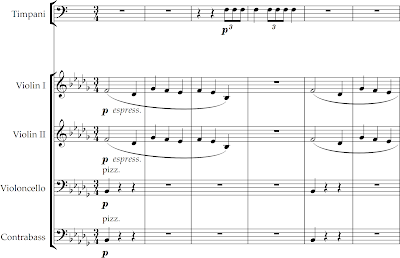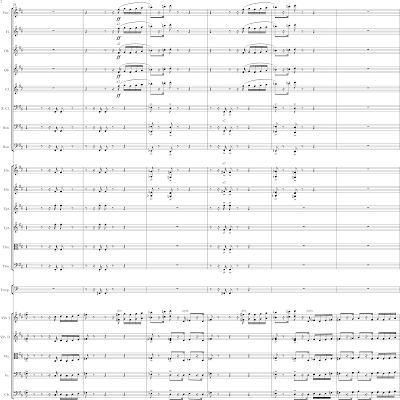CLXXV. SHOSTAKOVICH, Dmitri (1906-1975)
The Tenth -- written in the same year as Stalin's death -- failed to completely rehabilitate Shostakovich's reputation following the 1948 denunciation (the Zhadanov Doctrine); so he composed this lengthy orchestral hymn about the 1905 Revolution, and was awarded the Lenin Prize.
Although it may seem propagandistic, there is much to like about the work, including the extensive use of transformative folk-songs incorporated into the orchestral palette.
The symphony is played without pauses between movements ...
First Movement
On Sunday, January 22, 1905, a huge contingent of striking workers tried to deliver a petition to the Tsar. This opening reflects the eerie quiet of the morning before the disaster. The timpani and trumpet tell of a foreboding feeling ...
Things remain tense. Trumpets and drums heralds the coming disaster:
Second Movement
The tempo picks up, but the music remains troubled; a unison clarinet/bassoon line floats over the rapid string passages:
The symphony concludes with an all-out assault on G Minor!





















No comments:
Post a Comment